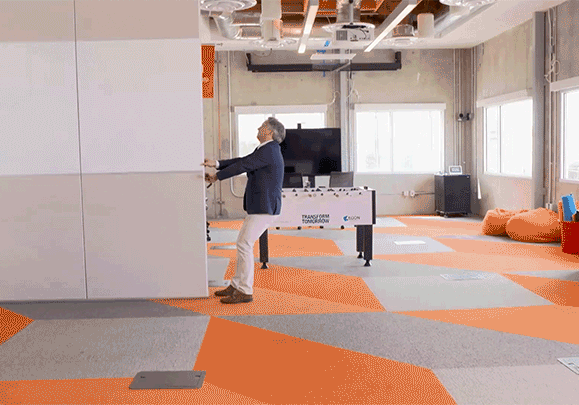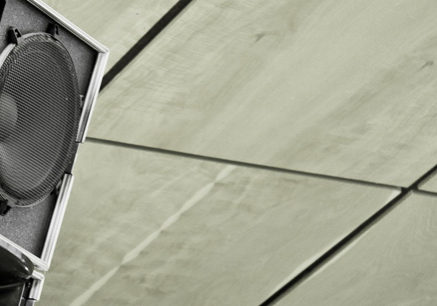Your Partner for Flexible Space
Operable Wall Acoustics 101 is a combination technical and day to day commentary on acoustics as they apply to moveable walls/operable partitions etc. Sound Control is the single most important factor when choosing a moveable wall. But the topic of moveable wall acoustics is often made too complicated by manufacturers as they speak in technical rather than practical terms. The purpose of this question/answer commentary is to attempt to eliminate some of the mystery and explain sound control in terms that are easily understood. You will find herein terms, facts and truths as they apply to operable and moveable wall acoustics. We have included links to articles that expand on the points presented as well as links to independent sources of information which we have used to verify facts contained in this article. If you have any questions please contact Moderco.
PURPOSE
This is a combination technical and day to day commentary on acoustics as they apply to moveable walls/operable partitions etc. Sound Control is the single most important factor when choosing a moveable wall. But the topic of moveable wall acoustics is often made too complicated by manufacturers as they speak in technical rather than practical terms. The purpose of this question/answer commentary is to attempt to eliminate some of the mystery and explain sound control in terms that are easily understood.
INTRODUCTION
The accepted and most common way for an Architect/Specifier to assess and compare the acoustics of a selected wall is it’s STC. Thus a great deal of this commentary revolves around STC, what it is, where it came from, how it is determined and is it a reliable predictor of field sound quality? The “loudness” or “amplitude” of a sound wave is expressed by its sound pressure level (SPL) which is then expressed in “decibels” (dB) calculated using a logarithmic scale from 0 to 150.. The primary acoustic purpose of a moveable wall is to reduce as much as possible the transmission of sound (dB) through the wall.


To determine this dB reduction (TL) through the wall, sound measured in dB’s across 16 frequencies (125 to 4000 Hz) and in a manner outlined in ASTM test procedure ASTM E-90. This sound is directed at the wall specimen. with the resulting loss at each frequency then determined. The results (reduction of dB through the wall at each frequency – STL) are calculated with the result, based on ASTM E- 413, then expressed as a single digit number identified as the walls STC. To be specific the STC is the dB transmission loss that occurs a 500 Hz.
What the consumer wants to know is how much “loudness, noise. dB “ will be lost if they install a moveable wall between two spaces in the field? To get a true picture you have to look at the loss at each individual frequency which is complicated and requires more acoustical knowledge and time than the average person has. So, for the purpose of this commentary the assumption is being made that 1 dB change equals 1 STC point change. (1) (2).This documented assumption allows the average person to be able to come to a quick and fairly confident conclusion as to the ability of a wall to stop noise (dB’s). Again – a “1” change in dB (loudness) is equal to a ”1” change in STC value. If, for example, a partition has an STC 40 that would mean that there will be a loss of 40 dB through the wall.
Much of the information in this commentary comes from “A Practical Guide to Noise Control. NBS Handbook 119” as published by the National Bureau of Standards, Washington DC.
Moderco Products and Acoustics

Meet Moderco All Over Again

Summary Of Moderco Moveable Walls

Moveable Wall Acoustics
WHAT IS STC?HOW IS STC DETERMINED?
STC is an acronym for “Sound Transmission Class”. It is a single number rating (an average) as determined by an ASTM test procedure (E-90) in an accredited laboratory and indicates quickly in a very general fashion as to how well a moveable wall attenuates (stops) airborne sound. In theory the higher the number the better. STC was initially developed so that specifiers and consumers could easily compare sound attenuation through moveable walls and other building elements.
KNOWING WHAT STC IS AND WHAT TO EXPECT AS A RESULT OF YOUR CHOICE
